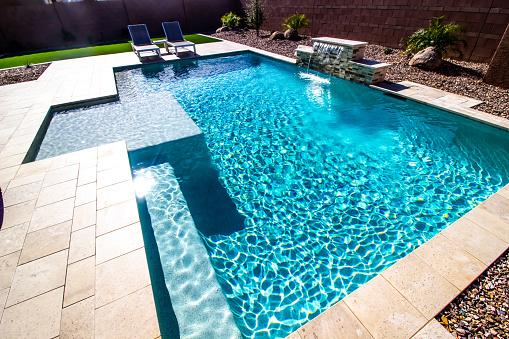11 Practical Water Safety Tips for Kids
It is about that time of year again when the temperatures outside are blazing hot in Arizona!
In Arizona, this is the time of year temperatures begin to blaze and many families “escape the heat” by engaging in water play or swimming activities in pools, lakes, or local gyms. Regardless of the location, there are multiple considerations to keep yourself and loved ones safe around water. Drowning can happen so fast (sometimes in less than 2 minutes after a person’s head goes under the water), leaving very little time for someone to help.
Here are a few water safety tips recommended by drowning investigators:
1. Have a family meeting prior to entering water.
- Discuss where the child(ren) is allowed to swim, jump in, and any safety concerns for the specific swimming area.
- This can be done while applying sunscreen.
2. Make the child(ren) aware of water depth vs their height.
- For instance, a child 3ft tall would have water over their head in the 4 ft area, but in 3 ½ foot depth water would be at their eye level.
3. Discuss how to get away from someone who is struggling and grabs onto the child for safety.
- Suck/Tuck/and Duck approach- Get a breath if you can (suck), duck under the water to move away from the person (the struggling person does not want to go under water), then use your arms and legs to push away (tuck).
- Yell for help immediately for the struggling person. Even adults can be weaker swimmers and may be in trouble when someone grabs on/hangs on them.
4. Have a designated water safety watcher.
- Kids should remind the watcher if they are not watching them. If needed, set a reminder on your phone every 1-2 minutes that says “Kids Breathing”?
- Distractions can be food, conversation, phone surfing, or just day dreaming.
5. Designate breaks
- Every 30 minutes is a good rule of thumb to take a break. The water watcher needs a break from maintaining attention.
- This is also a good time to hydrate and re-apply sunscreen.
6. Lifejackets (USCG approved) are fun!
- Safety is much higher if everyone wears a lifejacket – so make it fun.
- Play fun games like water balloon toss, relays passing rings from your toes, log rolling challenge, pretend play: rescue boat floating on back collecting ducks from pool, etc..
- Remember a life jacket does not replace diligent supervision.
7. Educate child(ren)…
- Water dangers like drowning, what drowning may look like, that drowning happens quickly, that they can’t breathe under water, the importance of entering water feet first, discouraging breath holding games or activities in a crowded pool, etc.
- Swim with a buddy and encourage swim lessons for children of all ages.
- “Hey, watch this!” Phrases like this often are the beginning of a dangerous activity. Talk about good decision making around water.
8. See something, Say something.
- Encourage your child(ren) to watch for others that may be in distress or at risk by choosing to perform unsafe activities.
9. Lost/Missing kids
- Always check the water first.
10. Learn CPR
- Drowning patients need oxygen – give air first!
11. Consider the color of the swimsuit you purchase for yourself or others.
According to the Swimsuit Color Test discussed on the Aquatic Safety Connection website:
- Bright and contrasting colors such as neon yellow, green and orange were the best color choices.
- On the other hand, dark pool bottoms and lake water tend to distort darker swimsuit colors such as navy blue, dark green, black and grey.
- When submerged in water, these colors often disappear more quickly, becoming impossible to see or disregarded as a shadow or debris.
- Red, pink, and orange tones were distorted to look more red and darker than expected under water surface, also making them difficult to see.
Learning these water safety tips is so important. Let’s have a fun and safe summer!!
AzOPT and Kids Place Pediatric Therapy provides therapy solutions to both children and adults in Arizona. For more information, visit our website.
References:
- https://alive-solutions.com/water-safety/f/swim-suit-color-testing-on-a-dark-pool-bottom
- https://kidshealth.org/en/kids/swim.html
- https://todayshomeowner.com/safety/guides/a-swimming-pool-safety-guide-for-your-home/
- https://alive-solutions.com/blog/f/10-water-safety-tips-from-a-mom-who-investigates-drownings
- https://www.cdc.gov/healthywater/swimming/swimmers/steps-healthy-swimming.html







